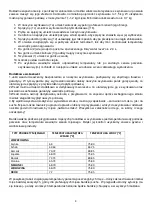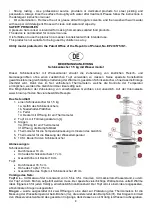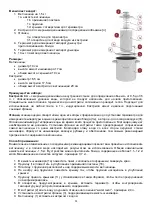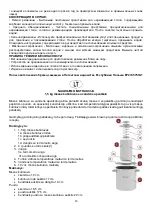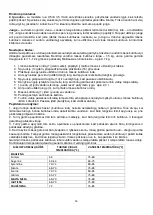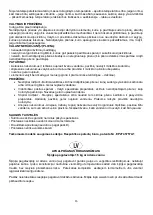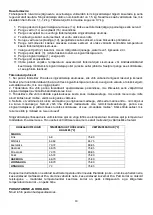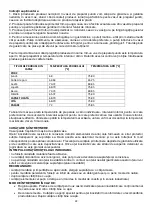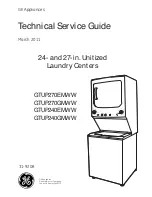
7
Additional tips:
1. If the content is put directly into the pressure ham cooker container, we get rid of excess fat and galantine.
In such a case, it is necessary to pour hot water on the pressure ham cooker container when removing the
content, which will make it easier to remove the spring with the food bound to the plate.
2.The content can be additionally placed in a dedicated bag, which facilitates removing it from the pressure
ham cooker and helps keep galantine within the food prepared.
3.The content can be wrapped in a dedicated casing with seasoning, which will provide our dish not only with
a richer flavour, but also with elegant appearance.
4. In order for the processed meat to turn out aromatic and with a distinct flavour, it can be cured
– either dry
or wet. You can also add your favourite seasonings to meat, put it into a pressure ham cooker, and leave it
in a refrigerator for a few hours in order to for it to “gain flavour”. Everything depends on what you prefer and
expect!
What is very important during preparation of meat products in a pressure ham cooker is the water temperature
during scalding and the temperature inside the meat content. Thanks to having control over it we will always
receive delicious and nutritious products.
MEAT PRODUCT TYPE
TEMPERATURE OF THE MEAT
INSIDE [°C]
WATER TEMPERATURE [°C]
PORK
Ham
68
75-80
Loin
62-63
65-75
Neck
70-72
80-85
Shoulder
68-70
75-85
Bacon
72-73
80-85
Fatback
65-72
75-80
LUNCHEON MEAT
68-70
75-80
BEEF
68-70
75-80
POULTRY
72
75-85
The above table features scalding temperatures for different meat type
– the lower range should be chosen
by those who prefer their meat juicier, while the upper is for those who prefer it drier. In case of fatback the
situation is quite different
– it will be crunchier when scalded in a lower temperature, and more buttery in a
higher one.
CLEANING AND MAINTENANCE
Stainless steel is resistant to corrosion, thanks to the alloy elements forming a thin, transparent, protective
layer on its surface. If it is mechanically damaged and not maintained properly, pitholes may appear on it.
The frequency of cleaning and maintenance depends on the frequency of use and the conditions in which
the product is kept. Any stainless steel with a damaged coating will rust if left unprotected.
WHEN CLEANING STAINLESS STEEL:
• never use highly abrasive materials,
• never clean with inorganic acids, which may cause discolouration of the surface and pitting corrosion,
• never allow stainless steel to come into contact with non-alloy steel (the particles of this steel will undergo
accelerated corrosion on the surface of the stainless steel).
RECOMMENDATIONS:
• Rinse solid dirt and impurities with clean water, wipe the surface with a soft cloth.
• For heavier dirt, use mild soap or detergent and a soft nylon brush.
• Rinse thoroughly after cleaning.
• Clean the elements at least once a year (more frequently in seaside and industrial areas).
MAINTENANCE IN THE CASE OF:
• Light rusting - Household cleaning products dedicated to cleaning stainless steel containing calcium
carbonate or citric acid. Rinse thoroughly with water.
• Medium discolouration - Clean with special agents for stainless steel, in accordance with the
manufacturer’s recommendations. Rinse thoroughly with water after cleaning.




